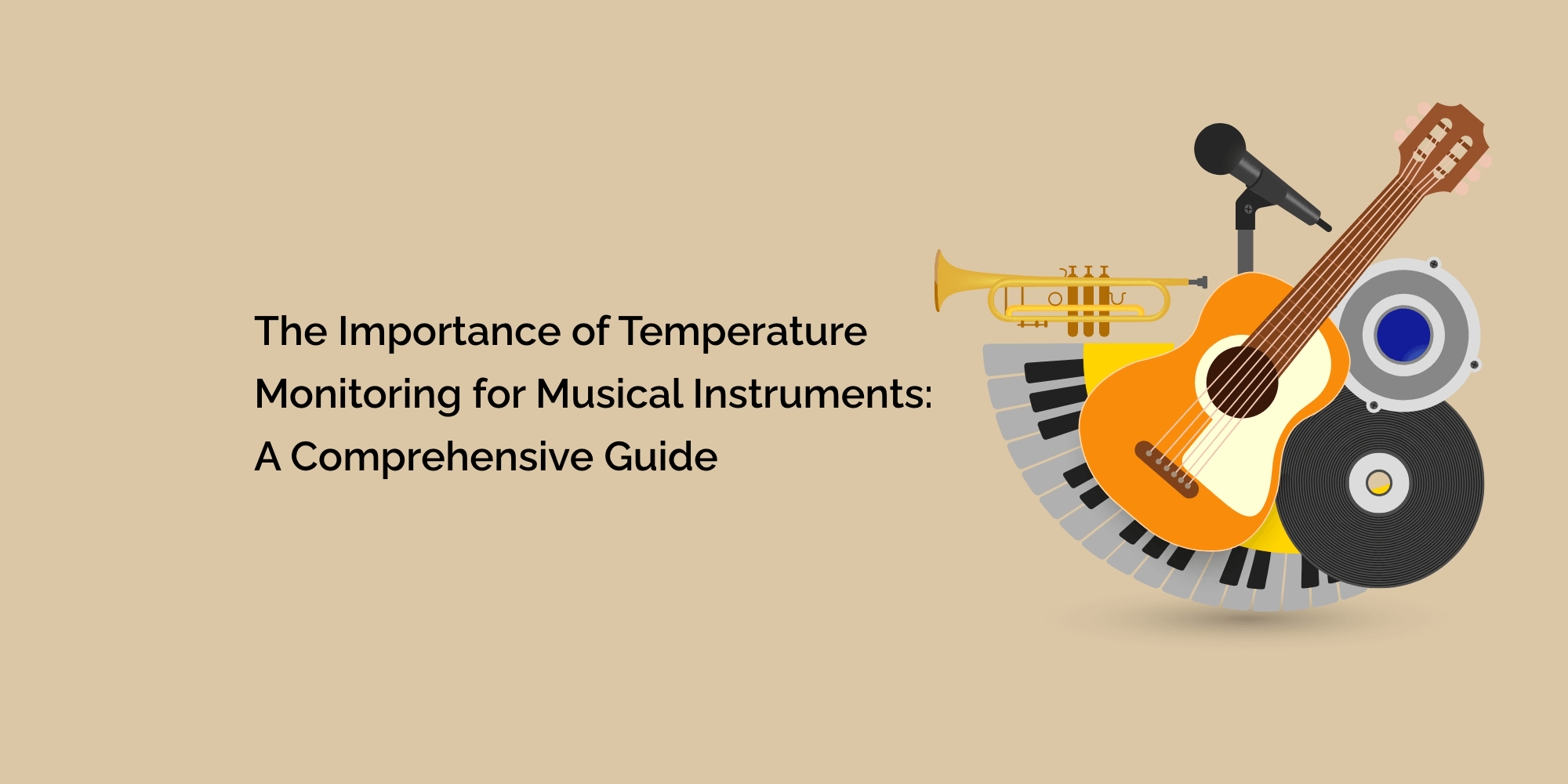Musical instruments are not just objects but delicate, finely crafted tools that produce beautiful sounds when played with care. Temperature plays a crucial role in maintaining musical instruments' structural integrity and optimal performance. This comprehensive guide will explore the importance of temperature monitoring for musical instruments. Whether you are a professional musician, an instrument enthusiast, or simply someone who appreciates the art of music, understanding the impact of temperature on your instruments is essential. From the effects of extreme temperatures to the benefits of proper storage and maintenance, this guide will provide valuable insights into preserving the longevity and quality of your beloved instruments.
The Impact of Temperature on Musical Instruments
Musical instruments are typically crafted from organic materials such as wood, metal, and animal-based products. These materials are susceptible to the effects of temperature fluctuations. High temperatures can cause wood to expand, leading to warping, cracks, or glue failure in instrument joints. Metal parts, such as keys and valves, can become sluggish or stuck when exposed to extreme heat. On the other hand, low temperatures can cause materials to contract, leading to structural damage or changes in pitch and tone. For instance, strings on string instruments may become brittle or lose tension in cold environments.
Optimal Temperature Ranges for Musical Instruments
Different types of instruments require specific temperature ranges to ensure optimal performance. Woodwind instruments, such as flutes and clarinets, are susceptible to temperature. The ideal content for these instruments is typically between 18-25°C (64-77°F). Brass instruments, including trumpets and trombones, can tolerate slightly higher temperatures but should be kept between 18-30°C (64-86°F). String instruments like violins and cellos prefer a more relaxed temperature range of 15-22°C (59-72°F). Percussion instruments, like drums and xylophones, are generally more resilient and can withstand a more comprehensive range of temperatures. However, keeping them within a comfortable room temperature range is still best.
Proper Storage and Temperature Control
Proper storage is crucial for maintaining the condition of musical instruments. Instruments should be stored in a clean, dry, and climate-controlled environment. Excessive humidity can cause wood to swell and warp, while low humidity can lead to drying and cracking. Rapid temperature changes can also stress the instrument's materials and affect tuning stability. It's advisable to use instrument cases with padding and humidity control mechanisms to provide additional protection. Climate-controlled environments, such as instrument lockers or dedicated rooms, are ideal for long-term storage as they regulate temperature and humidity.
Temperature Monitoring Tools and Techniques
To ensure the appropriate temperature conditions for your instruments, it's essential to use reliable temperature monitoring tools. Traditional thermometers can give a vital room temperature reading but may only provide accurate data in some areas. Digital hygrometers, which measure temperature and humidity levels, offer more precise monitoring. They can be placed in storage areas or inside instrument cases to maintain an optimal environment. Data loggers and wireless monitoring systems are available for those seeking advanced monitoring. These devices can track temperature and humidity over extended periods, allowing musicians to identify any fluctuations and take necessary actions promptly.
Maintenance and Instrument Care
Regular maintenance is critical to preserving the quality and lifespan of musical instruments. Frequent inspections should be conducted to identify any signs of damage or wear. Cleaning and conditioning should follow the manufacturer's guidelines to remove dirt, oils, and moisture that can affect the instrument's performance. For complex repairs or adjustments, it's advisable to consult a professional instrument technician or luthier specializing in the particular instrument type.
Traveling with Musical Instruments
Traveling with musical instruments requires extra care, particularly regarding temperature changes. For air travel, instruments should be kept as carry-on luggage whenever possible to prevent exposure to extreme temperatures in cargo holds. It's crucial to inform airline personnel about the fragile nature of the instrument to ensure proper handling. Road trips also require attention to temperature variations, especially if the instrument is left inside a vehicle. Instruments should never be exposed to direct sunlight or left in freezing conditions for extended periods. Proper insulation and protective cases can help minimize the impact of temperature fluctuations during travel.
Certainly! Here are some frequently asked questions (FAQs) regarding temperature monitoring for musical instruments:
How can improper storage and temperature fluctuations affect musical instruments?
Improper storage conditions, such as high humidity or rapid temperature changes, can lead to swelling, warping, cracking, or drying out of the instrument materials. This can impact the instrument's playability, tuning stability, and lifespan.
What temperature monitoring tools are available for musicians?
Musicians can use traditional thermometers to get essential temperature readings. Digital hygrometers are more accurate and can measure both temperature and humidity levels. Data loggers and wireless monitoring systems are also available for advanced and continuous monitoring.
How often should I inspect and maintain my musical instrument?
Regular inspections should be performed to identify any signs of damage or wear. Cleaning and conditioning should be done following the manufacturer's guidelines. As for maintenance and complex repairs, it's advisable to consult a professional instrument technician or luthier.
Conclusion
Temperature monitoring is a critical aspect of instrument care and maintenance. By understanding the impact of temperature on musical instruments and following proper storage, maintenance, and travel guidelines, musicians can preserve the quality and longevity of their devices. Whether you're a professional musician or a passionate hobbyist, investing time and effort in temperature monitoring will ensure that your instruments continue producing beautiful sounds for years. Remember, the better you care for your devices, the better they will perform and bring the players and listeners joy.








